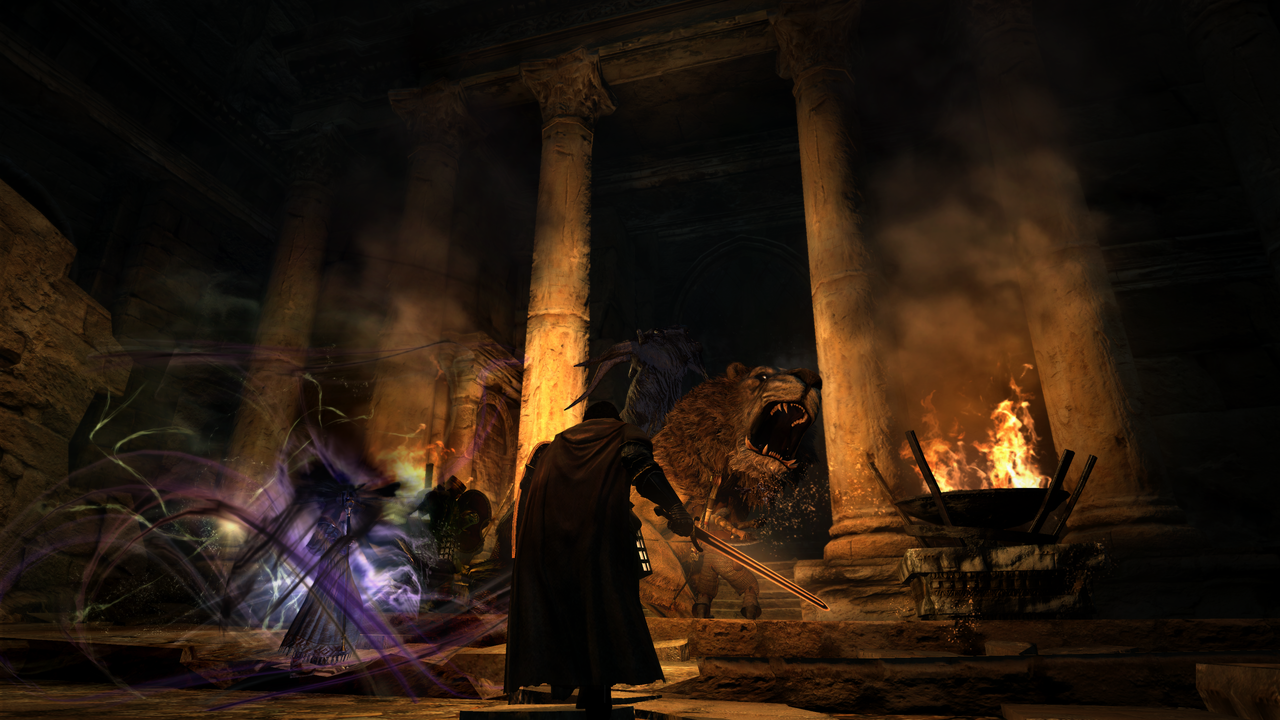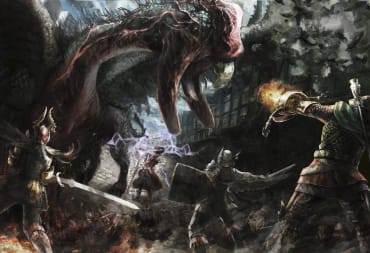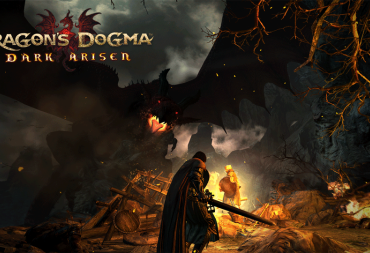Dragon’s Dogma has been one of the defining games of the past console generation. Its peculiar take on the Action RPG genre has been an example for many titles released afterward. It goes without saying that when Capcom announced that Dragon's Dogma: Dark Arisen was going to be released on PC, it made many people really happy. Among these people, there are the ones (probably most of them) that never had the chance to play Dragon’s Dogma on console in its time and knew about how amazing it was only from watching gameplay videos, listening to hearsay or a mixture or both. Yours truly is part of this demographic. The first part of the Dragon’s Dogma: Dark Arisen review (that you can find here) focused on the port and the technical aspects of the title. This part will talk about the game itself and its mechanics for the benefit of the gamers that never had the chance to play Dragon’s Dogma and want to know what’s the deal with it.
https://www.youtube.com/watch?v=goH1mtLiyGU
Capcom’s take on Western-style Action RPGs was, and still is, something that blows the competition out of the water. It flawlessly merges many aspects of Western titles (crafting, gathering, real time combat) with some of the best features of their Eastern counterparts (huge monsters with multiple parts, independent AI controlled party members). The result is a 2012 release with gameplay that still feels refreshing.
The story is as basic as it gets, at least initially. A dragon appears and vows to bring death and destruction to the land. When the wyrm attacks our hero’s village, the main character goes to face it. Intrigued by their force of will, the dragon steals and eats their heart, making our hero the Arisen, an individual linked to the dragon and the only one that can defeat it. The plot thickens later on down the line with the introduction of new characters and subplots and even a few plot twists. It is interesting enough, but it never feels like it’s the best part of the game.

Dragon’s Dogma allows you to create your own version of the Arisen. The character creation is detailed enough with a good array of options for faces, hair and body types. Tattoos, scars and other little details to give your Arisen personality are all present. There are no scroll bars for faces, but you can choose from a number of set options. Luckily there are enough to give you a fair choice.
Once you create your Arisen and chose a name, you will have to choose one of the three base classes to start with. Dragon’s Dogma: Dark Arisen follows the classic rogue/mage/warrior holy trinity of RPG games, although with some unique differences. There are three base classes you can choose from. Every class has a primary and a secondary weapon with three skills for each one. For example, the fighter base class uses a one-handed weapon and a shield at the same time. So you will use three weapon skills and three shield skills.
Every class plays very differently from the others. Remaining in the scope of base classes (Fighter, Strider and Mage), every one of these will have some peculiar traits unique to that class. The Fighters are the only ones that hold primary and secondary weapons at the same time (sword and shield) and is purely a melee class, the Strider can switch between daggers and bow while the Mage is a ranged focused class that only has a two-handed staff, but can equip six spells instead of having three for a primary and three for a secondary weapon.

Gameplay differences become even more prominent if you decide to go for an advanced or a hybrid class. There is one advanced version of every base class and one hybrid class for every combination of base classes (Magick Archer is Mage + Strider mix that can use magic bows and unleash certain spells with their daggers for example). It's wonderful to pick up a new class and find yourself having to learn a new different playstyle, especially considering that there’s not only one way to play each class, giving you a great incentive to experiment with all the possibilities. You’ll also have to carefully pick the specializations of your pawns depending on how you decide to play.
Speaking of which, let’s talk about pawns. These NPCs are the answer to Capcom’s question “How I make a game that is balanced around a four people party but without investing a ton of time into characterizing the supporting characters?”. The answer is “Pawns”. These are inhabitants of a parallel dimension called “The Rift”. These individuals are basically humans without the gift of free will. The Arisen has the power to summon one main pawn and two supporting pawns from any Rift Stone in the world. They will follow you, fight with you, gather resources with you and share their expertise of the world and quests.
The difference between main and supporting pawns is that the main pawn you create yourself. Very early in the game, you’ll be brought in a character screen, this time to design and create your personal pawn. You have the same options of when you created your Arisen, with the addition of choosing some personality traits. This pawn will stick with you the whole game, and you have complete control over it. You can change its class, equipment, personality and combat behaviour in any way you want whenever you visit an inn. It also gains experience and class points with you while the game proceeds.
Supporting pawns are main pawns created by other players that you can summon to help you. You have limited control over them. Their class, behaviour and equipment are decided by their owner. They also don’t gain experience while they’re summoned. This means that at some point you’ll have to replace them. You can still summon them again in the future when they’re higher level.
When you depart with a pawn, you have to give it a gift for its owner and rate its usefulness. When a main pawn is summoned as supporting pawn from another player, it also gains Rift Points, that can be spent to hire pawns of a higher level than you. This means that when you’re not playing, your companion can be summoned by other players, gathering gifts and rift points for you. A bit like a Pokémon exchange but with a tiny hint of slavery.

Pawns are useful in a multitude of ways. For example if you hire a pawn whose Arisen already completed a quest you’re doing, it will guide you to the quest objective and offer useful insights (like telling you when there’s danger ahead). They also gain knowledge about the enemies they fight as the game goes on, and they will tell you the best way to deal damage to them.
Of course, the main reason you need pawns in the first place is to fight. Fighting in Dragon’s Dogma: Dark Arisen is what you will do most of the time and it’s extremely rewarding. Enemies are not merely damage sponges that you have to keep hitting until they fall. Each one has different fighting strategies and will need to be approached a different way. You will not be able to do a decent amount of damage to a Saurian if you don’t cut off their tail first. If you’re playing a physically oriented class while facing Spectres, you're in for a tough battle, since they are only vulnerable to physical attacks when they possess someone. Even Goblins, the most weak of creatures, can be dangerous when in great numbers with their swarming combat tactics and their tendency to call for reinforcements. Every enemy needs a different strategy and you and your pawns have to adapt on the fly.
What made Dragon’s Dogma famous are the battles against giant monsters. There are quite a lot of these, either encountered as boss fights or as creatures just roaming around the land. These huge enemies will have to be accounted for in a very different way than your average monster. Most of them have different body parts that you can target in order to obtain different results. You’ll find yourself pretty often climbing these foes like in Shadow of the Colossus in order to reach a certain body part. You want to kill a Chimera quickly? You better grab its snake tale and cut it right off before you start going against the goat and lion heads. If you want to kill a Cyclops quickly, you should aim for its eye. However, if you’re not a ranged class in this situation, you may prefer to hit its ankles until it loses balance, which allows you to reach its head easily. I could go on forever. There are epic moments where you find yourself hanging onto the back of a flying griffin and hacking its wing to force it to fall down to your allies, and these moments are frequent and never lose their luster.
Fighting is not the only thing you’ll do in Dragon’s Dogma: Dark Arisen, but it’s a good part of it. Another big section of the gameplay is exploration and the numerous side quests you will have the option to take. There are some intriguing ones among those, but most of them are largely uninteresting. The classic “go kill this monster” or “bring me this object” quests are littered about. The world itself is well designed but there is little variety in the environments. It is not something that greatly affects the enjoyment of the game though. Maybe ninety percent of the world is plains and cliffs, but most are so well constructed that you don’t really mind.
Dragon’s Dogma: Dark Arisen comes with the Dark Arisen expansion included. You will be able to access Bitterback Island, the expansion's main area, pretty early in the game. It is advised to wait until late game to actually go there though. Its dangers are vastly more severe than the ones present in the main world, even after the credits roll. When you reach level 40, killing an Ogre will seem like an errand. Then you go to Bitterback Island and find yourself fighting not one, but two Gorecyclops at the same time with very little space to move around and you reconsider what you thought you knew about fighting.
Bitterback Island is basically a huge dungeon, with an extremely difficult last boss at the end of it. Its atmosphere is extremely dark and the monsters in it are way more difficult to face then the ones you’re used to in the main land. It’s a highly challenging and rewarding expansion that will have you play for many more hours for the sheer curiosity to discover the deepest secrets of the island.
Dragon’s Dogma: Dark Arisen is everything that made it the great game it is on console years ago, but rendered in 1080p and running at 60 FPS. If you like the genre and don’t mind the slightly outdated graphics engine and textures, it’s a sure bet.
Dragon's Dogma: Dark Arisen was reviewed on Steam using a code provided by Capcom.
Did you play Dragon's Dogma: Dark Arisen on console? What you think of its PC incarnation? Let us know in the comments
Review Summary
Dragon's Dogma on PC is the best version of the game. It's charming and fun as the day it came out but this time at a higher resolution and better frame rate. The game engine shows its age but it's not enough to make this game less of a masterpiece.
(Review Policy)Have a tip, or want to point out something we missed? Leave a Comment or e-mail us at tips@techraptor.net








.jpg?itok=buCm1tK4)




